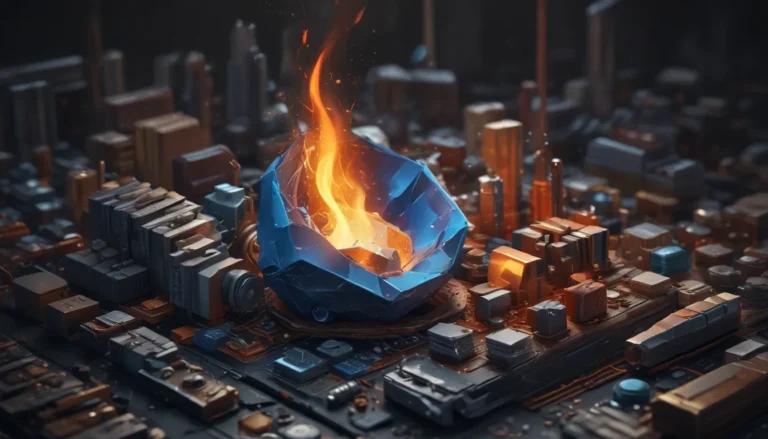A Note About Images: The images used in our articles are for illustration purposes only and may not exactly match the content. They are meant to engage readers, but the text should be relied upon for accurate information.
Are you intrigued by the enigmatic world of dislocation? From the intricate behavior of dislocated atoms to the remarkable properties of dislocation loops, there is much to discover about this fascinating phenomenon. Whether you’re a chemistry enthusiast, a curious learner, or simply someone captivated by the mysteries of the universe, this article is tailored for you. Let’s embark on a journey of exploration and enlightenment as we unravel the secrets behind dislocation.
Understanding the Intricacies of Dislocation
Dislocation is not just a physical injury; it’s a complex phenomenon that occurs in various domains, from the physical world to the realm of chemistry. It involves the displacement of components from their normal position, sparking the curiosity of scientists and researchers for centuries. In this article, we will delve into the captivating world of dislocation and uncover 18 intriguing facts that will leave you astounded. Get ready to broaden your understanding of dislocation and its diverse manifestations.
Key Takeaways
- Immediate Care: Dislocations are painful joint injuries that require prompt medical attention and preventive measures to manage and reduce the risk.
- Prevention is Key: Understanding the causes, symptoms, and treatment of dislocations can help prevent long-term complications and promote healthy, stable joints.
- Rehabilitation Matters: Rehabilitation and physical therapy play a crucial role in restoring strength, mobility, and stability after a dislocation, reducing the risk of recurrence.
Dislocation: A Painful Reality
Dislocation is a traumatic injury where the bones of a joint are forced out of their normal position, leading to severe pain and immobility. Commonly dislocated joints include the shoulder, fingers, knees, and hips, which are highly mobile and prone to injuries.
Exploring the Causes of Dislocation
Dislocations can result from falls, sports injuries, accidents, or sudden force applied to a joint. Factors such as ligament tears and weak joint structures can contribute to the risk of dislocation. Recognizing the signs and symptoms, including swelling, bruising, deformity, intense pain, and loss of movement, is crucial for timely intervention.
Managing Dislocation: First Aid and Diagnosis
When a dislocation occurs, immediate first aid measures such as immobilizing the injured person and applying ice packs can help reduce pain and swelling. A doctor may perform a physical examination and order X-rays to confirm the dislocation and assess associated fractures or soft tissue damage.
Techniques for Reduction and Rehabilitation
The process of returning a dislocated joint to its original position, known as reduction, can be done manually or through surgical intervention in complex cases. Following reduction, rehabilitation and physical therapy are essential for restoring strength, mobility, and stability. Engaging in proper warm-up exercises, using protective gear, and maintaining strong joint muscles can help prevent dislocations.
Exploring Complications and Prevention
Dislocation can lead to complications such as nerve damage, joint instability, recurrent dislocations, and early onset of osteoarthritis. Preventive measures, including regular exercise, avoiding injury-prone situations, and prompt medical attention in children, are vital for minimizing risks.
Understanding Different Types of Dislocations
Exploring the various types of dislocations, such as anterior, posterior, complete, incomplete, volar, and dorsal dislocations, sheds light on the diverse treatments required for each type. Additionally, distinguishing between dislocations and subluxations, where the joint surfaces are partially separated, highlights the varying severity of joint injuries.
Delving into Dislocation in Various Contexts
As we age, the risk of dislocations increases due to factors like weakened bones, reduced muscle strength, and degenerative joint conditions. Individuals with joint hypermobility syndrome may be more susceptible to dislocations, requiring tailored management strategies. Contact sports entail a higher risk of joint dislocations due to the intense physical contact and sudden movements involved.
Recurrent Dislocations and Seeking Professional Help
In some cases, individuals may experience recurrent dislocations, emphasizing the importance of proper treatment and rehabilitation to minimize the risk of recurrence. Seeking timely medical attention from qualified healthcare professionals is essential for effective care and management of dislocations.
The Fascinating World of Dislocation in Chemistry
Dislocation isn’t merely a physical issue; it’s also a fascinating aspect of chemistry that reveals the dynamic nature of atoms and molecules. By understanding dislocation processes, scientists gain valuable insights into material properties and behavior, leading to advancements in various industries. The 18 enigmatic facts presented in this article showcase the intriguing range of phenomena associated with dislocation, from forming dislocation loops to strengthening materials.
FAQs on Dislocation
-
What is a dislocation in chemistry?
A dislocation in chemistry refers to a line defect in a crystal lattice, crucial for material plastic deformation. -
How are dislocations formed?
Dislocations can arise through crystallization, mechanical deformation, or external factors like stress and temperature changes. -
What are the effects of dislocations on material properties?
Dislocations can significantly influence material strength, ductility, and response to external forces. -
Why are dislocations important in materials science?
Dislocations play a vital role in material behavior during deformation, processing, and failure, essential for designing materials with desired properties. -
How are dislocations studied in the laboratory?
Various techniques like microscopy and computer simulations are used to visualize and analyze dislocations at the atomic scale. -
Can dislocations be eliminated or repaired?
Dislocations can be partially eliminated through processes like annealing, but complete removal is often impractical. -
Are all materials prone to dislocation?
Most crystalline materials are prone to dislocation, with prevalence and behavior varying based on factors like structure and composition. -
Can dislocations occur in non-crystalline materials?
Dislocations are characteristic of crystalline materials, while non-crystalline materials like glasses lack a defined crystal structure and do not exhibit dislocations. -
Can dislocations be beneficial?
Yes, dislocations can enhance material strength and ductility, increasing resistance to deformation and fracture. -
Is dislocation a permanent defect in materials?
Dislocations can move and rearrange within the crystal lattice, altering the material’s structure and properties under certain conditions.
Digging Deeper into Crystal Defects
While dislocations play a pivotal role in materials science, edge dislocations offer astounding characteristics worth exploring. Unveil the fascinating properties of screw dislocations and their impact on material behavior. Line defects are essential in material science, shaping the properties of materials we encounter daily. Expand your knowledge further by delving into these insightful articles.
Conclusion: Embracing the Complexities of Dislocation
Dislocation isn’t just a physical injury – it’s a multifaceted phenomenon that intertwines the worlds of chemistry and material science. By delving into the intricate world of dislocation, we gain a deeper understanding of crystal structures, defects, and material behavior. From strengthening materials to enhancing durability, the study of dislocation holds immense practical value across industries. Remember, the next time you encounter a material undergoing deformation, ponder the secrets hidden within its dislocations.
Embracing Continuous Learning
Unlocking the secrets of dislocation isn’t a one-time endeavor; it’s a journey of continuous discovery and enlightenment. As you delve deeper into the complexities of crystal defects and dislocation mechanisms, broaden your understanding and satisfy your curiosity. By embracing lifelong learning, you open doors to new insights and knowledge, shaping your understanding of the intricate world around you.
Feedback and Engagement
At the core of our content lies a commitment to delivering accurate, engaging, and authentic information that resonates with our readers. Each fact and insight shared on our platform is meticulously reviewed by our dedicated editors to ensure credibility and quality. We value your feedback and engagement as we strive to provide a platform where knowledge and curiosity converge, fostering a community of learning and exploration. Join us on this enlightening journey of discovery and growth.
In the realm of dislocation, complexities intertwine with practical applications, shaping the materials that surround us. Embrace the mysteries of dislocation, explore beyond the surface, and embark on a journey of continuous learning and discovery. As you unravel the enigmatic world of dislocation, may each fact and insight ignite your curiosity and deepen your understanding of the intricate mechanisms at play.






